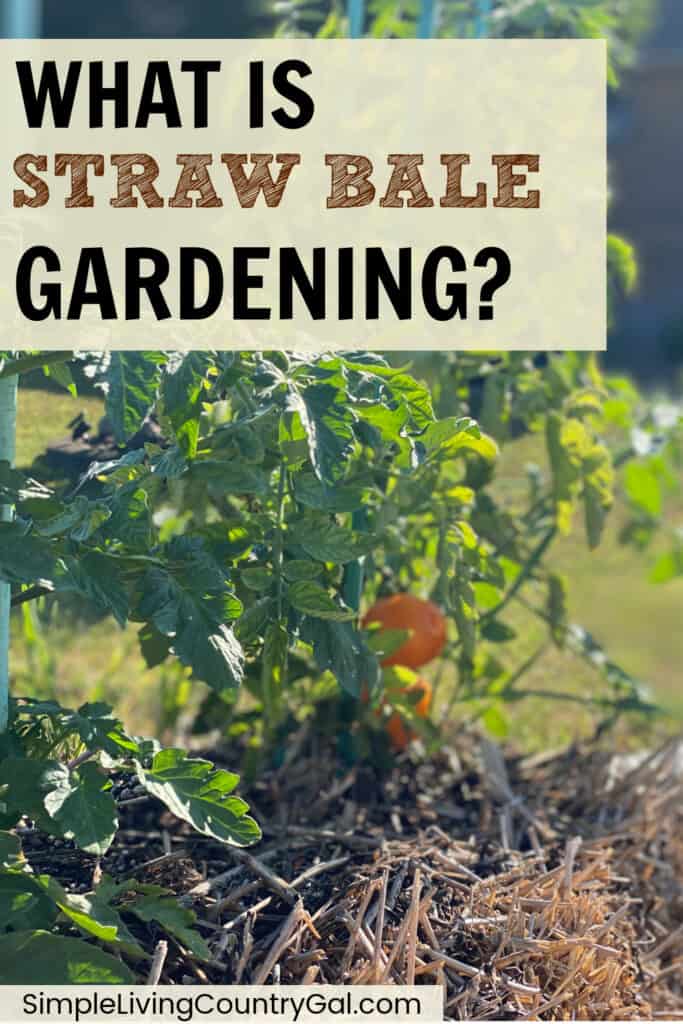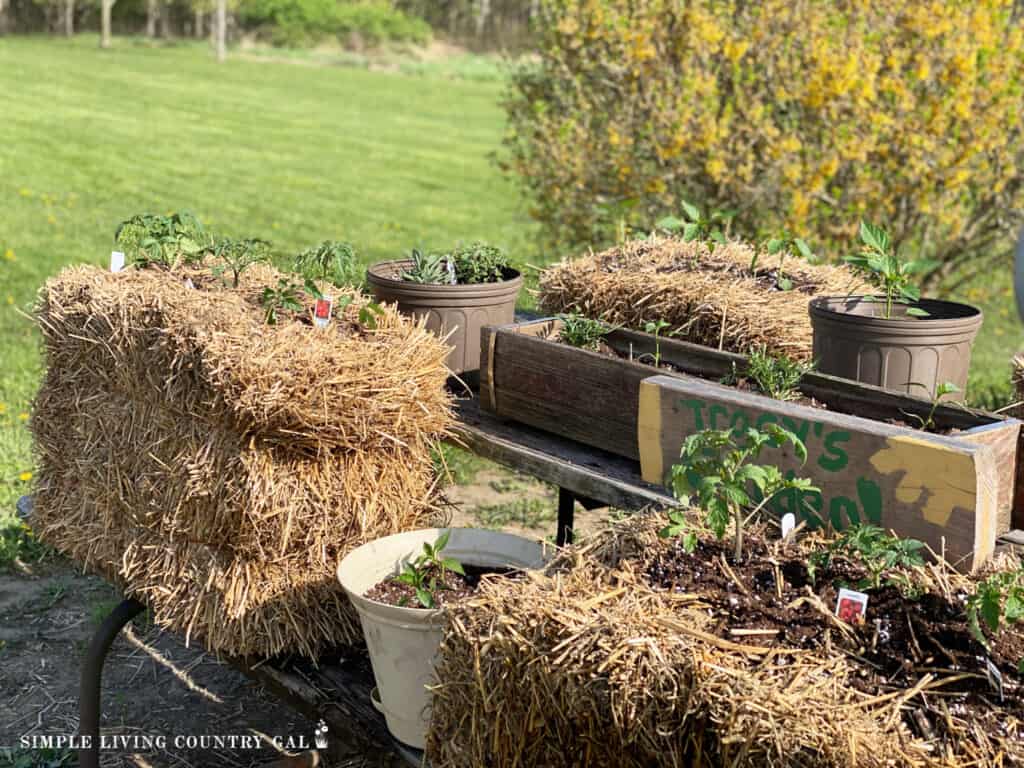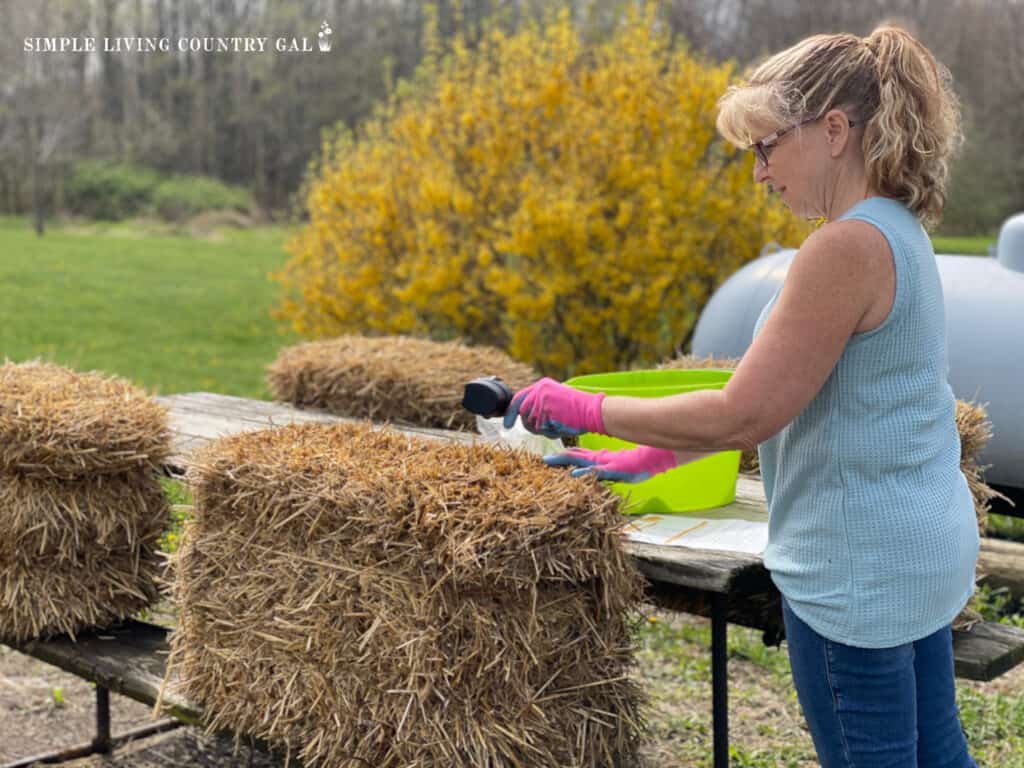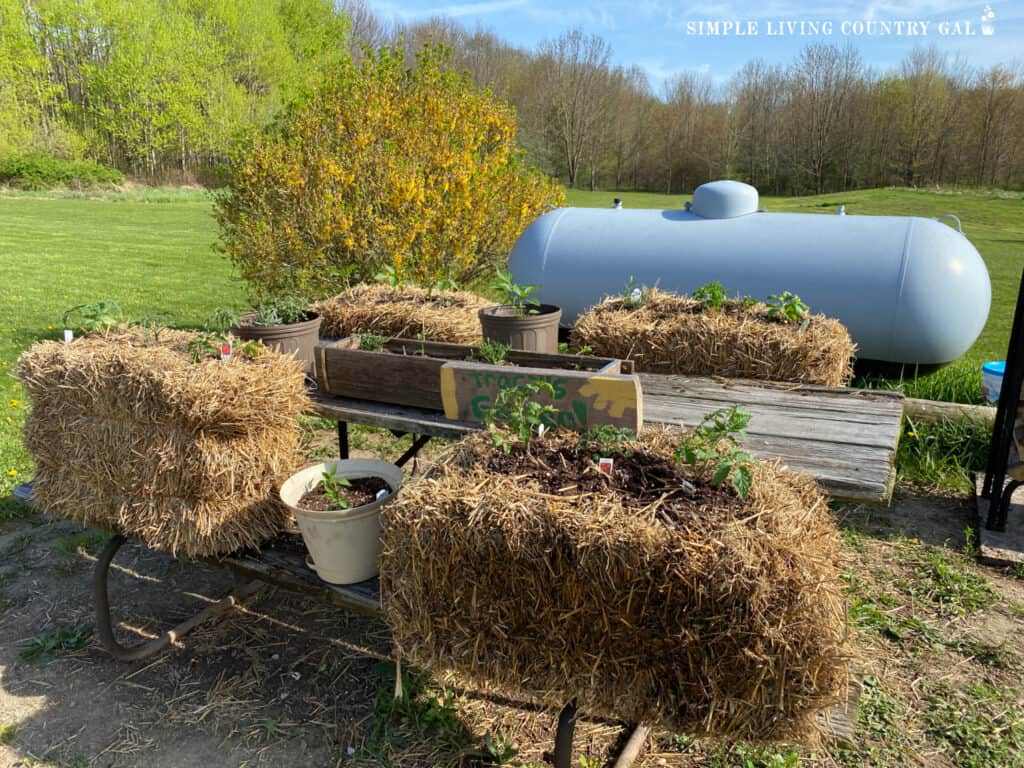what is straw bale gardening
One of my favorite ways to garden is in bales of straw. It’s easy to do, has little clean-up, and, zero weeds. If you are new to this fun way of growing your vegetables, then this article on what is straw bale gardening will give you an overview.
Gardening 101 that includes growing your veggies and herbs in bales of straw right outside your kitchen door.

Homesteading is becoming an increasingly popular trend in modern-day life, with people looking to be more self-reliant so they can rely less on the stores. One of the biggest challenges for homesteaders living in the city or with physical limitations is finding suitable ways to grow their vegetables, fruits, and herbs. Luckily, there is a simple solution that everyone can try – straw bale gardening.
Why I love Straw Bale Gardening
I started my very first straw bale garden 4 years ago and it quickly became my preferred way to grow our herbs and vegetables. The older I get the more quickly my back begins to ache and using bales allows me to lift my garden up so I am bending over less. But, let’s back up and talk about what straw bale gardening is so you can decide if this unique approach will work for you.
What is straw bale gardening?
Straw bale gardening is a unique way of growing plants using straw bales as containers for soil and seeds. This method requires:
- Minimal space – You can grow a surprising amount in a single bale of straw.
- Little time to maintain – There is little to no weeding throughout the growing season.
- Small cost investment to get started – All you need to buy is the bale and fertilizer.
Straw bales are a great solution for anyone who is short on space or time or has physical limitations.
Get more tips on how start a backyard garden here!

How to Set Up a Straw Bale Garden
Before you can start planting, you need to prepare the bale’s interior. Right now what you have is straw. What you need is a growing material that is similar to soil. This can be done with a recipe that takes about 14 days to complete.
You will want to use a recipe of water, fertilizer, and rest for a period of 2 weeks checking the progress to be sure you are on track.
GET THE STEP-BY-STEP GUIDE ON PREPPING BALES HERE
What pests can infest straw bales?
Even though pests are uncommon in straw bale gardens, there are a few to keep an eye out for.
- Snails
- Slugs
- Grubs
- Mites.
To prevent pests from taking hold in your garden, inspecting straw bales for signs of infestation before planting is important. Additionally, beneficial insects such as ladybugs can help prevent pest populations from becoming overwhelming.
1500 Live Ladybugs – Good Bugs – Ladybugs – Guaranteed Live Delivery!BioLogic’s Scanmask Beneficial Nematodes, Steinernema feltiae Sf Nematodes for Natural Insect Pest Control (50 Million with Applicator)
Niteangel Natural Wooden Hanging Bee House for Gardens | Natural Wooden Butterfly Hotel for Bee, Butterfly, Ladybirds, Beneficial Insect Habitat, Bee Hotel Garden
8 x 1 million Beneficial Nematodes (S.feltiae) – Nema Globe Pot Popper Organic Indoor Fungus Gnat & Insect Control
REASONS WE LOVE GARDENING IN BALES
It’s easy to see I love this style of gardening; let’s take a look at a few of the top reasons.
#1. Easy to Prep
Since the straw bales act as a self-contained gardening system, there is no need to dig or till the soil. The bales provide an ideal bedding for plants to grow, and the straw helps retain moisture, allowing the plants to grow without any fuss.

#2. Saves Space
Straw bale gardening is also an excellent solution for urban homesteaders who have limited space. Since the bales can be vertically arranged, it is possible to grow plants in tight spaces such as balconies, patios, and rooftops. Straw bale gardening can also help homesteaders who don’t have access to traditional garden beds due to soil issues or lack of sunlight.
How often should I water my straw bale garden?
Depending on the climate and plant variety, straw bales should be watered once or twice a day during the hottest times of the year. During cooler months, watering may only be necessary once or twice weekly. It is important to monitor your plants for signs of thirst, such as wilting leaves, and adjust your watering schedule accordingly.
#3. Cost-Effective
Straw bale gardening can save money on gardening supplies such as mulch, planters, and soil amendments. Straw bales can be found at your local garden center, farm supply store, or feed store, and they are relatively inexpensive compared to traditional raised beds. You only need to purchase seeds, seedlings, and soil to start your garden.
#4. Accessible to All Ages and Abilities
Straw bale gardening is a great option for seniors and those with physical limitations who may have difficulty bending down to tend to a traditional garden. Since the plants are elevated, it is much easier to access and care for them. Additionally, the maintenance required is minimal, so it is an accessible option for those who may have limitations on their physical activities.

#5. Easy cleanup
Straw bale gardening is easy to clean up because the bales can be put directly into your compost area. Be sure to remove the bale twine first, and you are good to go. Easy cleanup is another amazing reason I love this method so much.
Straw bale gardening is a smart solution for urban homesteaders, seniors, and people with physical limitations who want to grow their food. This technique is easy to set up and maintain, saves space, is cost-effective, accessible to all ages, and is eco-friendly. With just a few simple supplies, including straw bales, soil, and seeds, you can start your straw bale garden today.
Whether you are an experienced gardener or just starting, straw bale gardening is a great way to grow fresh, delicious vegetables, fruits, and herbs while enjoying the benefits of being self-reliant and environment-friendly.
More Straw Bale Gardening Resources:
- How to Grow Herbs in Straw Bales
- How to Prepare Straw Bales for Planting
- Best Plants for Straw Bale Gardening




